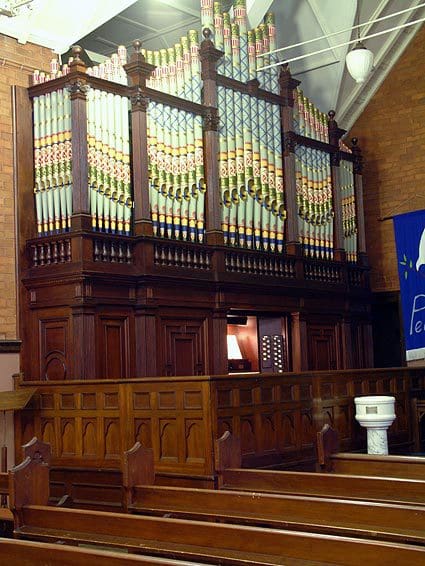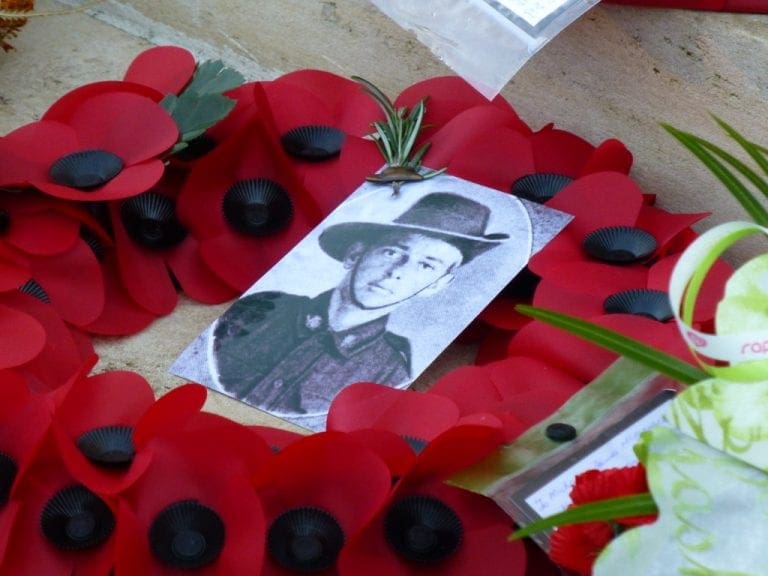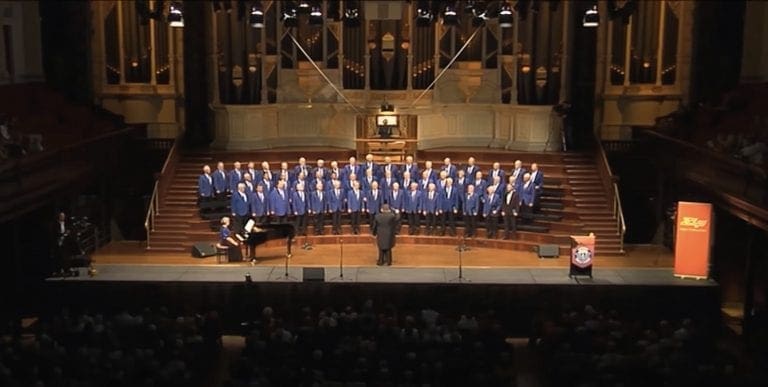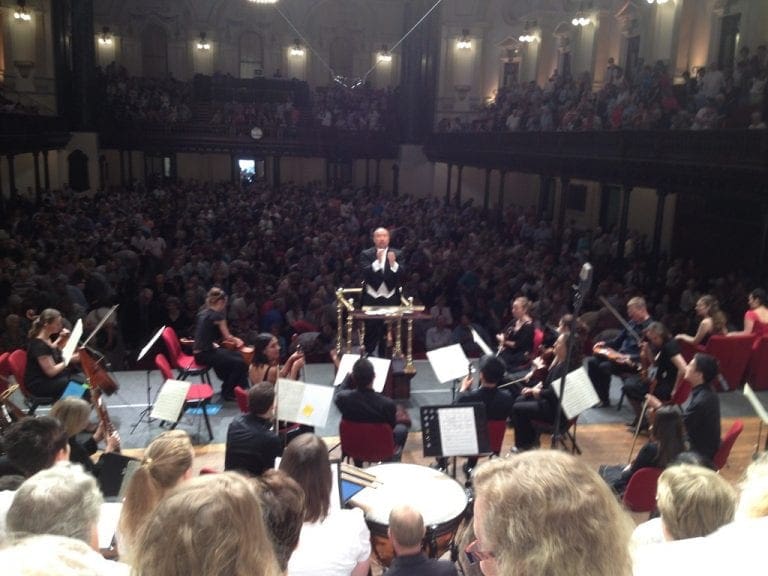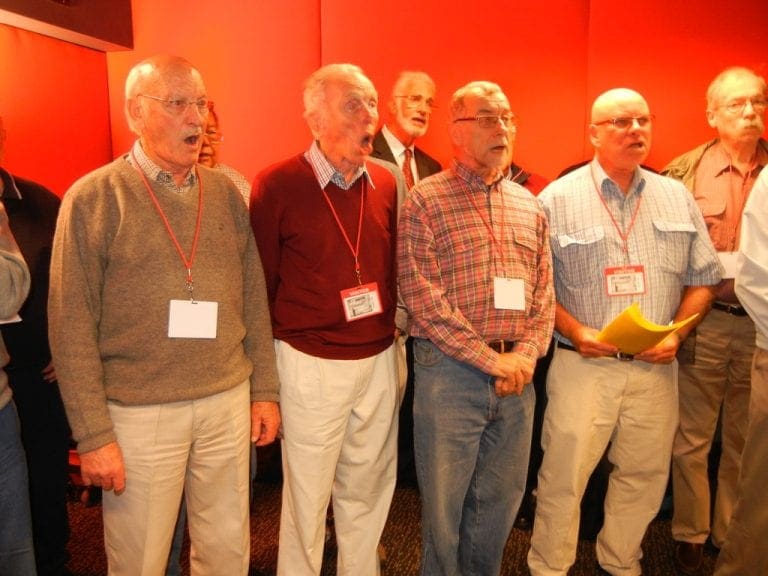An Adventure – Day in the Life of a Chorister
Saturday 3 September turned out to be a day to remember. A day that Laurel and Hardy would have been proud of. It began innocently enough with a ‘getting the band back together’ email that arrived in mid June for expressions of interest for a one-off Messiah on 3 September 2016 – with just a single 2 hour rehearsal on the same day. My wife and I talked it over. This would be a good chance to take the van to Sydney and spend a few days catching up with old friends. I replied to accept the invitation. A good astrologer would have told me to get out at once.
The first collapse began a couple of weeks later when, within a few days, Friday 2 September (which was empty) suddenly became full – Eisteddfod with Wagga City Rugby Male Choir; bus trip without community group; Biggest Blokes lunch. The Eisteddfod won so I reluctantly cancelled Messiah. Then, second thoughts: I could fly up to Sydney just for the day and catch the night train back for a leisurely sleep. And, yes, I could still sing Messiah again.
The second collapse began at the end of July with an email from NSW TrainLink to announce that ‘Buses replace Trains’ for that trip. Ok, I thought. The bus would be ok. No big deal. Press on.
The flight. The Eisteddfod passed (we got a first and a Highly Commended) and Saturday 3 September arrived. I had practised my Messiah daily for about 2 weeks. Polished and packed, we drove through flood water to the Wagga airport in lots of time to catch the flight to Sydney. Time was going to be crucial all day. Many deadlines to tick off throughout the day. The connecting flight was 20 mins late arriving and took a good 20 mins to unload, clean and ready for us. We had all, one-by-one, cleared the security screening and had sat around in our little glass box room. Right on 9:40am, the expected departure time of the aircraft, the ground craft supervisor stepped to the microphone and announced ‘seats 10 to 19 can board now’. Her words were drowned by an alarm. A small boy child had managed to open an alarmed emergency door into the secure space. Jaws dropped. The security supervisor sighed, ‘We are going to have to re-screen. All of you please go outside and come back through the security screen.’ We filed out with either grins or looks of annoyance. The small boy child, looking chagrined and clutched tightly in his mother’s arms, exited last and exited to the carpark. We waited while the glass-box room was inspected minutely – all chairs and benches were upturned, rubbish bins inspected, mirrors used to look into difficult places. We then one-by-one went through the disrobe needed for security screen and filed into the glass-box room. The boy child, still looking chagrined and still tightly clutched by its mother came in last. Dad was no longer with them and was studiously looking at wall art. All went ok from there. Boarded. Flew. Pilot went like the clappers to make up the 40 mins late we had taken off, did a screeching landing and a bit of a u-turn on the runway to avoid taxying. Arrived at Sydney airport just 17 mins late. How are we going so far? Where is that astrologer?
Buses replacing trains was to be one of the themes for the day. Buses replaced trains from Wynyard to Lindfield, where the concert was. Ominous slow traffic did not bode well for a rapid return. Humm. But, I did get to the church in time – for the rehearsal.
More on what we were to do. It turned out that we were singing a memorial concert for one of our fellow choristers. Her husband had ‘got the band back together’ to sing her favourite oratorio. The choir was about 50 voices about evenly split Soprano, Alto, Tenor and Bass. Plus 4 soloists, organist, 1st and 2nd violin, viola, oboe, bassoon, cello, timpani and trumpet. And conductor. We are old hands at this church and its very small performance space. We all have to fit into a matchbox. After greeting each other and done the ‘what have you been doing since?’ questions we put ourselves, with care, into our cramped and difficult to get to seats. I had put myself in my favourite seat – front row of the choir stalls, next to the Tenors and with my back to the organ. The organist is over my left shoulder. Great sound from here. I know this Messiah piece very well. I have sung it more than 20 times – more than 5 in this church.
Dr Paul Paviour OAM is our conductor. He is an extremely good conductor and has been our leader for many years. He knows his music and this Messiah extremely well. A good fellow to work with. (Like Paul Paviour, I am a bit of a Messiah expert. To do this big piece with 1-2 hour rehearsal, we all have to be. I usually sing it without holding the music.) After we were slotted into our seats, Paul came in and said, ‘This year, I would like the Basses and Tenors where the Altos are. Can you please all move.’ Because I was jammed up with the Tenors, I was the last Bass to get out. After the reshuffle, I ended up in the front row, middle seat. I could touch Paul’s podium without straightening my arm. Three cameras were set up and trained on me. No comfort zone now. It gets worse.
‘We will start. First off, number 4 – And the Glory. Just the first few bars.’ And we are off. Me not holding music. At the second Bass entry ‘for the mouth’, Paul held up his hands, stopped us (not easy) and fixed his beady eye on me. ‘You can sing. I have Bass right in front of me who can sing. I’m glad I moved those Altos away. Right, you can lead the choir.’ My new best friend. I think he might have changed his mind later. It gets worse.
More on staging. From where I now was, I had Paul and his lectern right in front, 2 violins and viola just in front on my right. I had no idea how much noise they make. Bassoon, cello and oboe in front left; Basses to right and behind; Sopranos left and behind; Altos far right in the choir stalls; Tenors out of hearing behind me; organ (almost unhearable) to my very far right. I pride myself on my knowledge of this Messiah and its entries, and this pride was about to be destroyed. As a Bass I rely on the organ and the Tenors for my lead and direction. I could now hear neither. I cannot use the violins at all and that was all I could now hear.
Paul Paviour uses a 60cm white stick in his right hand for conducting. He keeps a very precise beat with the beat exactly in the middle to the downbeat – a delight for a chorister. He beats either 1st and 3rd or just 1st for each bar depending on the tempo. Sometimes, he swings the white stick like a Samurai sword as he emphasises a long note or heads over to beat the violins. All this was about to get interesting.
The 1st violin pointed out that Paul had no room at all behind him and might fall backwards, his lectern should be moved forward. Now, Paul and I could easily grip each other elbows without moving our feet. My chest almost touched the lectern. We sang number 4 again and finished it. For each entry, I usually prepare my breath and am paused waiting for that precise downbeat. Paul began fixing me with his beady eye just before each Bass entry and then punching his finger, thumb or white stick at me right on the entry point. I ducked and missed the entry – every time. By the end of number 4, I was leaning sideways away from that white flashing stick and punching left fist. I had not got a single entry. I’m no longer Paul’s favourite. It gets worse.
I am so unnerved that I have fetched my score from under my chair – a crutch. The next song is number 7 ‘And He Shall Purify’ – lots of runs. I am good at runs. I follow that stick and hit the beginning of each group of 8 notes. I’ve decided that I cannot watch Paul’s eyes. So, I spend the rest of the rehearsal and the concert avoiding eye contact with the person standing less than a metre away who is trying to make eye contact – before punching at me with his white stick. The next problem emerges. After Paul does his Samurai slice for the occasional long note, he often loses his beat. Instead of beating 1 and 3, he is now beating 2 and 4. I have this clock going in my head 1, 2, 3, 4, 1, 2, 3, 4 etc and now he is beating in a different place to where I think the beat should be. When that has happened before, it is usually me who is wrong, so, I switch and follow the stick. Oh, and by the way, the music is going past pretty fast while this happening. Meanwhile, the rest of the choir, who is not able to see the stick (because their heads are in their books) are charging on as before at the old steady 1, 2, 3, 4. Suddenly, Paul realises that something is wrong. Glares at me for leading him astray and goes back to the old beat. I am now a beat out. More glares. This happened often. I realised that I now have to do more that follow the beat, I have to recognise when Paul is out of time, hang onto what the Basses are doing and try to steer him. The organ that might have been of use is inaudible in the enormous levels of decibels around me.
We struggled through the rehearsal like this. Once or less through most songs. Then, at 2pm rehearsal stopped for us and we lunched. The performance was at 5pm. Quite a good performance that went much the same way as the rehearsal – Paul punching at me, me avoiding eye contact and hugging the fellow next to me; Paul slashed with his sabre and coming back in a beat late, getting lost and glaring at me. I probably made it worse. I have have made a habit to ‘grin if things go wrong’. I might have grinned a bit and that did not help the glare which became intense. The soloists were good.
By now I had other things on my mind – Time. When I booked the transport for this, time was going to be tight. Usually, Messiah goes for close to exactly 2 hours, but our soloists sang a few more arias than I had planned and that 2 hours was looking unlikely. The ‘buses replacing trains’ from Central to Wagga was leaving 25 mins earlier than the train would have left. The ‘buses replacing trains’ between Lindfield and Wynyard had been a traffic jam last time I had looked. If I was to use the bus, I would have to leave the church well before 7pm. I decided to scrap that idea and go for a taxi. If taxi, what was the latest to leave (given that I had not booked a taxi and could not book anything because I was in the front row of a choir on stage with cameras pointed at me)? I decided that 7:15pm was the cut off – I had to leave the stage no later than 7:15pm. Intense clock watching began. The clock was just behind Paul’s head. He must have thought I was staring at him. At 6:55, we sang Hallelujah. Going ok. Oh no. The Soprano is on her feet. She has a magnificent voice, but – sing faster. Us next ‘Since by Man’ – can we sing this faster please? ‘The Trumpet shall sound’ is yet to come. The Bass did a fantastic job. Our turn at 7:12 with our last piece ‘Worthy is the lamb’. Finished at 7:17pm. As the last ‘amen’ echoed around the church and with another glare from Paul, I grabbed my program from under my seat and dashed for the exit.
Taxi within 10 mins with me pacing up and down the footpath. The taxi driver did a great job and we arrived at central just in time to catch the ‘buses replace trains’ to Wagga. Country music and Seekers all the way home. Arrived back at Wagga at 3:10 am. Where was that astrologer when I needed him?
